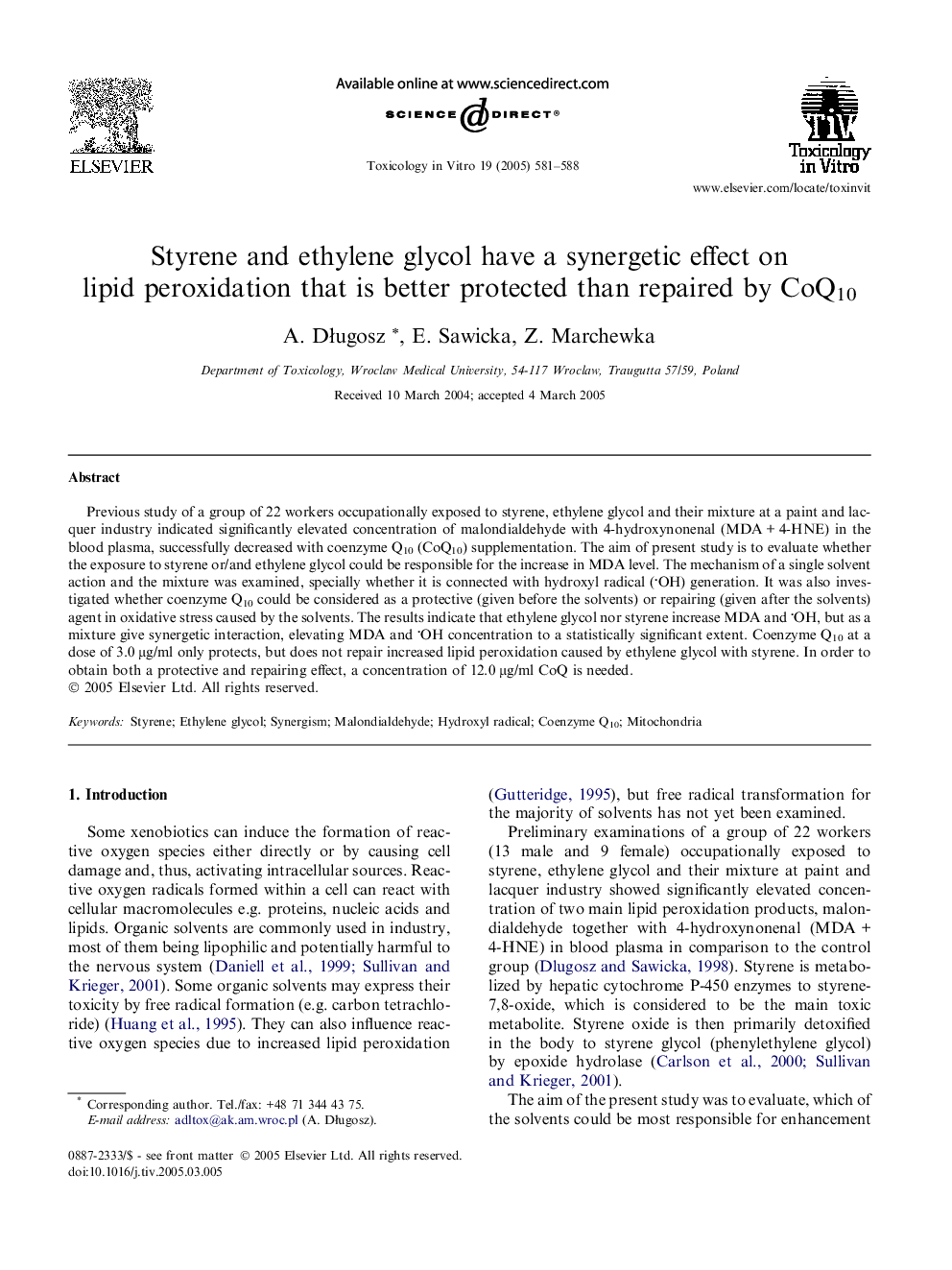| Article ID | Journal | Published Year | Pages | File Type |
|---|---|---|---|---|
| 9038421 | Toxicology in Vitro | 2005 | 8 Pages |
Abstract
Previous study of a group of 22 workers occupationally exposed to styrene, ethylene glycol and their mixture at a paint and lacquer industry indicated significantly elevated concentration of malondialdehyde with 4-hydroxynonenal (MDA + 4-HNE) in the blood plasma, successfully decreased with coenzyme Q10 (CoQ10) supplementation. The aim of present study is to evaluate whether the exposure to styrene or/and ethylene glycol could be responsible for the increase in MDA level. The mechanism of a single solvent action and the mixture was examined, specially whether it is connected with hydroxyl radical (OH) generation. It was also investigated whether coenzyme Q10 could be considered as a protective (given before the solvents) or repairing (given after the solvents) agent in oxidative stress caused by the solvents. The results indicate that ethylene glycol nor styrene increase MDA and OH, but as a mixture give synergetic interaction, elevating MDA and OH concentration to a statistically significant extent. Coenzyme Q10 at a dose of 3.0 μg/ml only protects, but does not repair increased lipid peroxidation caused by ethylene glycol with styrene. In order to obtain both a protective and repairing effect, a concentration of 12.0 μg/ml CoQ is needed.
Related Topics
Life Sciences
Environmental Science
Health, Toxicology and Mutagenesis
Authors
A. DÅugosz, E. Sawicka, Z. Marchewka,
